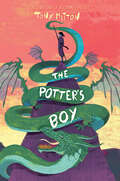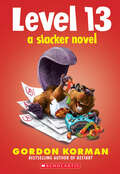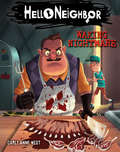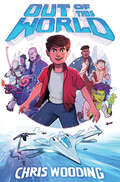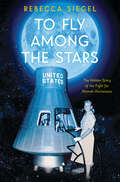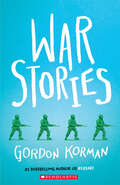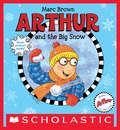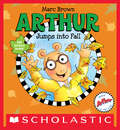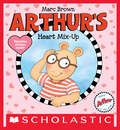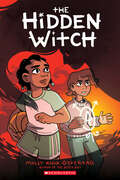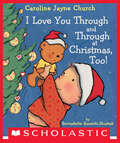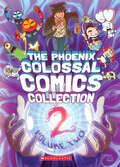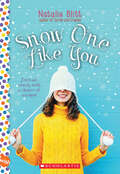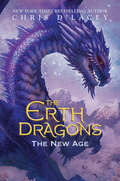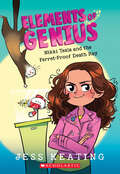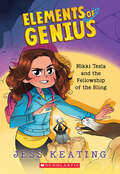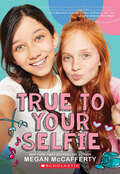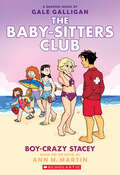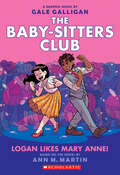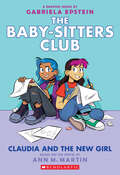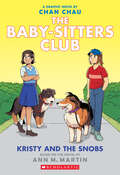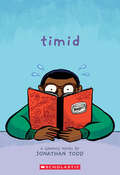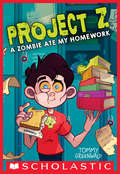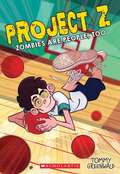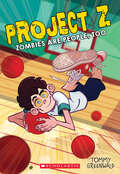- Table View
- List View
The Potter's Boy
by Tony MittonAn odyssey-type adventure and coming-of-age story about family obligation and finding one's path. This is The Alchemist meets Inside Out and Back Again for fans of Thanhha Lai.The first middle-grade novel from internationally acclaimed author Tony Mitton!Ryo was born the son of a potter, a fate that he is unsure of once a mysterious wanderer and trained fighter comes to his small village and protects them from a band of thieves. Inspired by the events, Ryo embarks on both a hero's quest and a quest to be a hero. Through his adventures, Ryo trains in the art of both fighting and mindfulness under the elusive Hermit of Cold Mountain. On his journey, he learns the art of stillness, the body's relationship to nature, and the art of controlling one's emotions in order to find his path in life. But when tragedy strikes the group, and the way of life that Ryo knows, he must use what he's learned to do what is right for himself and his future. With excellent pacing and poetic prose, The Potter's Boy is a story about family obligation and finding one's purpose.
Level 13: A Slacker Novel (Slacker)
by Gordon KormanFrom the bestselling author of Swindle, Restart, and Slacker is another hilarious story about an underachiever who learns to go above and beyond.Cameron Boxer, king of the slackers, has found something worth his time. By playing video games online in front of an audience he can find both fame AND fortune -- especially with Elvis (a beaver who seems to love video games as much as Cam) at his side.The only problem? Things keep getting in Cam's way. Like school. And the club he accidentally started. And the misguided people in his life who don't think beavers should be playing video games.It's going to take some trickery, some close calls, and a fierce devotion to slacking in order for Cam to get to his goal -- conquering the game's infamous Level 13. But if any slacker can do it, Cam can.
Waking Nightmare (Hello Neighbor #2)
by Carly Anne West Tim HeitzIt's been four months since Nicky Roth has seen his best friend and neighbor, Aaron Peterson. Aaron's father, a reclusive theme park designer, told the town that Aaron and his sister Mya are living with a relative far away, but Nicky can't seem to accept it. Plagued by terrifying nightmares of robotic mannequins, rotting theme parks, and a dark basement, Nicky teams up with his friends from school to find out what really happened to Aaron and Mya. Together, they start piecing together a picture more disturbing than they could have imagined. The screams coming from the neighbor's house can't be nothing, and Nicky is determined to get to the bottom of where his friends went, and what-if anything-can be done to save them. This pulse-pounding prequel novel to the hit video game Hello Neighbor includes two-color illustrations throughout, to help readers unwind the mystery at the heart of the game.
Out of This World
by Chris WoodingThe Hitchhiker's Guide to the Galaxy meets Guardians of the Galaxy in this intergalactic middle-grade adventure by Chris Wooding.If he had it his way, Jack would spend his days drawing aliens and epic space battles. But it seems Jack's daydreams of action and adventure will remain just that: daydreams.Until his 12th birthday, that is. That's when Thomas, the annoying kid from school, stumbles upon a weird machine that sends a beam of light into the sky. Suddenly, Jack's world is turned upside down when intergalactic beings appear on Earth and try to kill him. His only hope for survival is a ragtag team of alien bounty hunters: Boston Sark, Mazzy, Dunk, and Ilara. Through his new companions, Jack learns of the mysterious Gradius Clench, a precocious superspy and the universe's most wanted kid. And he looks just like Jack! Now, the race is on to find this elusive Gradius Clench -- through fantastic landscapes, seedy pirate hideaways, and worlds Jack could only imagine -- and maybe, just maybe, figure out how Jack fits into all of this...
To Fly Among the Stars (Scholastic Focus): The Hidden Story of the Fight for Women Astronauts
by Rebecca SiegelA searing look at the birth of America's space program, and the men and women aviators who set its course.In the 1960s, locked in a heated race to launch the first human into space, the United States selected seven superstar test pilots and former military air fighters to NASA's astronaut class -- the Mercury 7. The men endured grueling training and constant media attention for the honor of becoming America's first space heroes. But a group of 13 women -- accomplished air racers, test pilots, and flight instructors -- were enduring those same astronaut tests in secret, hoping to defy social norms and earn a spot among the stars.With thrilling stories of aviation feats, frustrating tales of the fight against sexism, and historical photos, To Fly Among the Stars recounts an incredible era of US innovation, and the audacious hope of the women who took their fight for space flight all the way to Washington, DC.
War Stories
by Gordon KormanThere are two things Trevor loves more than anything else: playing war-based video games and his great-grandfather Jacob, who is a true-blue, bona fide war hero. At the height of the war, Jacob helped liberate a small French village, and was given a hero's welcome upon his return to America.Now it's decades later, and Jacob wants to retrace the steps he took during the war -- from training to invasion to the village he is said to have saved. Trevor thinks this is the coolest idea ever. But as they get to the village, Trevor discovers there's more to the story than what he's heard his whole life, causing him to wonder about his great-grandfather's heroism, the truth about the battle he fought, and importance of genuine valor.
Arthur and the Big Snow
by Marc BrownEveryone’s favorite aardvark is back in a wonderful winter tale—from the creative producer of PBS’s Peabody and Emmy Award-winning TV series.It’s the perfect snow day, and Arthur is excited to spend it with his friends. But because his little sister D.W. is too small, he has to wait for the snow plow to come by. Arthur waits so long, his friends have finished sledding! Will his snow day get any better? With a little help from Dad, Arthur realizes some things are worth waiting for.
Arthur Jumps into Fall
by Marc BrownArthur the aardvark can’t leave well enough alone in this autumn adventure—from the creative producer of PBS’s Peabody and Emmy Award-winning TV series.Arthur has a big job to do: raking all of the leaves in the backyard. He tries to focus, but jumping in the leaves is way more fun than raking them. How will he ever finish? Arthur will need some help from his friends for this task!
Arthur's Heart Mix-Up (Arthur 8x8 Bks)
by Marc BrownArthur the aardvark’s dog breaks his heart! From the creative producer of PBS’s Peabody and Emmy Award-winning TV series.Arthur is carefully working on his science fair project—a model of the human heart—when an overexcited Pal runs through and ruins it! Will Arthur’s friends be able to help—and in time for the fair?
The Hidden Witch: A Graphic Novel (Witch Boy (Graphix/Scholastic))
by Molly Knox OstertagFrom the creator of the acclaimed graphic novel The Witch Boy comes a new adventure set in the world of magic and shapeshifting -- and ordinary kids just trying to make friends.Aster and his family are adjusting to his unconventional talent for witchery; unlike the other boys in his family, he isn't a shapeshifter. He's taking classes with his grandmother and helping to keep an eye on his great-uncle whose corrupted magic wreaked havoc on the family.Meanwhile, Aster's friend from the non-magical part of town, Charlie, is having problems of her own -- a curse has tried to attach itself to her. She runs to Aster and escapes it, but now the friends must find the source of the curse before more people -- normal and magical alike -- get hurt.
I Love You Through and Through at Christmas, Too!
by Bernadette Rossetti-Shustak Caroline Jayne ChurchA toddler and his teddy return in this joyful and loving holiday book from the creators of the bestselling I Love You Through and Through.We love our little ones through and through and especially at Christmas, too!Join our bestselling toddler and bear as we huggle and snuggle and wiggle and giggle during this loving holiday. “I love you with bells and wreaths, garlands and trees, with ribbons and bows, from your head to your toes!”Share some love with your little one with I Love You Through and Through at Christmas, Too!Praise for I Love You Through and Through at Christmas, Too!“Tender sentiments make for a cozy wind-down read.” —Publishers Weekly“Good for a holiday snuggle with a little one.” —Kirkus Reviews
The Phoenix Colossal Comics Collection: Volume Two (The Phoenix)
by Contributor VariousA stunning full-color bind-up of content from the amazing Phoenix comic. From humor to adventure to nonfiction to puzzles to the just plain awesome, this bind-up is a smorgasbord for everyone.Continue the laugh-out-loud humor, the thrilling adventure, the just plain awesome. The second epic compendium in The Phoenix Colossal Comics Collection will have you traveling from the sewers of London, to Daniel Crisp's crazy imagination, into the forest with giant mechanical insects, to cat starships in outerspace and back again. From humor, to adventure, to non-fiction, to puzzles, this bind-up is a smorgasbord for everyone.
Snow One Like You: A Wish Novel (Wish)
by Natalie BlittMia can't wait for the Winter Festival -- it's what her hometown, Flurry, Vermont, is famous for. Plus, maybe she can work up the courage to show the cute new boy, Yoshi, how much fun snowball fights can be. There's just one problem: the weather forecast isn't predicting a single snowflake before the big day. And what's the Winter Festival without snow? Canceling the festival would spell disaster for the local businesses, including the cozy inn that Mia's family runs. With the town in chaos, Mia is suddenly at odds with Yoshi and with her best friend, Lark. Can Mia save the festival in time . . . or is she in for a wintry mix of troubles?
The New Age (The Erth Dragons #3)
by Chris d'LaceyNew York Times bestselling author Chris d'Lacey spins the epic conclusion to his saga of the original clash between humans and dragons.From Erth to the dragon homeworld, Ki:mera, everything has been forever changed by the meeting of dragons and humans. Their fates have become inextricably intertwined -- and their story will transform the very fabric of time.Ren, the human boy, now has unprecedented powers. With his control of a magical horse, his abilities scare even the Wearle's most formidable dragons.Yet the dragons fear the rise of the dark dragon Graven even more, and rumors run rampant that the dragons who came first may have known more than anyone realized. As the implications of the dragons' colonization expand, new creatures are drawn into the conflict, and Gabrial and Grendel will travel beyond the ends of the Erth to save their two young wearlings.In this epic and sweeping third installment of New York Times bestselling author Chris d'Lacey's Erth Dragons trilogy, new powers and new worlds collide in a blazing conclusion.
Nikki Tesla and the Ferret-Proof Death Ray (Elements of Genius #1)
by Jess KeatingOcean's 11 meets Spy School in this hilarious illustrated middle-grade series featuring the world's greatest minds."Let the official record show that, I, Nikki Tesla, did not intend to destroy the world."There are only so many times a kid can invent an instrument of global destruction without getting grounded. So when Nikki's death ray accidentally blows up her bedroom (if you can call a pet ferret with an itchy trigger finger an accident), she's sent to the only place that can handle her. Genius Academy is a school for history's greatest brains. Leo da Vinci? Charlotte Darwin? Bert Einstein? All extraordinary. Yet even among her fellow prodigies, Nikki feels like an outsider thanks to a terrible secret she can't let anyone discover. Ever. But when her death ray is stolen, Nikki must stop worrying about fitting in and learn to play nice with her new classmates. Because it doesn't take a genius to track a thief around the world, outwit the authorities, and keep a French fry-fanatic ferret happy. It takes all of them.
Nikki Tesla and the Fellowship of the Bling (Elements of Genius #2)
by Jess KeatingOcean's 11 meets Spy School in this hilarious illustrated middle-grade adventure series featuring the world's greatest tween geniuses."For a group of geniuses who are supposed to help people, we do an awful lot of stealing."Nikki Tesla and the rest of the Genius Academy team have agreed to pilfer a completely priceless, totally lethal high-tech ring. Why? Because a mad scientist on a power trip plans to use it to do some serious damage. And because the very same mad scientist has kidnapped Mary Shelley. Mess with one genius, and you mess with them all.But mostly they're planning the heist of the century so Nikki can get to know her long-lost father who claims he isn't the criminal mastermind she believes him to be. After all, if a little international thievery can protect the world from evil, it just might save Nikki's family.
True To Your Selfie: A Wish Novel
by Megan McCaffertyThe most hilarious, charming, realistic story of middle-grade friendships you'll ever read, from Megan McCafferty, the mega bestselling, beloved author of Sloppy Firsts.Twelve-year-old Ella has everything she needs to take seventh grade by storm, from the perfect outfit to the perfect new best friend. She's still not 100% sure why cool, confident Morgan has chosen Ella to be her newest sidekick, but Ella is flattered by the attention, even if it means giving up some of the things she's always loved, like fantasy novels . . . and her former best friend, Sophie. Ella feels a little guilty about ditching Sophie, but middle school is no laughing matter, and Ella knows that it'll be safer in popular Morgan's shadow than by Sophie's side.But life as Morgan's best friend is trickier than Ella imagined. Everything has to be perfect, from their "on brand" selfies to the videos they record of them singing. And the more demanding Morgan becomes, the more Ella starts to wonder if she made the right choice. But Sophie already has a new best friend, leaving Ella feeling more alone and out of place than ever.So when Ella discovers a new activity that she's really good at -- a hopelessly dorky sport that Morgan has forbidden her from pursuing, Ella has to ask herself what matters more: popularity . . . or staying true to herself? But does she even know who she really is without loyal Sophie by her side?
Boy-Crazy Stacey: A Graphic Novel (The Baby-Sitters Club Graphix #7)
by Ann M. MartinA graphic novel adapted and illustrated by New York Times and USA Today bestselling author Gale Galligan!Stacey and Mary Anne are baby-sitting for the Pike family for two weeks at the New Jersey shore. Things are great in Sea City: There's a gorgeous house right on the beach, a boardwalk, plenty of sun and sand... and the cutest boy Stacey has ever seen!Mary Anne thinks that Stacey should leave Scott alone and focus on the Pike kids, but Stacey's in love. Looking for reasons to hang around his lifeguard stand takes up all her time, which means Mary Anne has to do the job of two baby-sitters! How can she tell Stacey that Scott just isn't interested without ruining their friendship and breaking Stacey's heart?
Logan Likes Mary Anne!: A Graphic Novel (The Baby-Sitters Club Graphix #8)
by Ann M. MartinAnother Baby-sitters Club graphic novel adapted by New York Times bestselling author Gale Galligan!It's the first day of a new school year, and while Mary Anne doesn't know what to expect from the eighth grade, she's looking forward to getting back into the swing of things. One thing she definitely doesn't expect is to meet Logan Bruno, who just moved to Stoneybrook!Logan has a dreamy southern accent, he's awfully cute... and he might be interested in joining the BSC. But the baby-sitters aren't sure if Logan would make a good club member, so they send him on a job with Mary Anne as a test. Logan and Mary Anne hit it off, but Mary Anne isn't sure of where their friendship could go. Life in the Baby-sitters Club has never been this complicated -- or this fun!
Claudia and the New Girl: A Graphic Novel (The Baby-Sitters Club Graphix #9)
by Ann M. MartinA brand-new Baby-sitters Club graphic novel adapted by newcomer Gabriela Epstein!Claudia has always been the most creative kid in her class... until Ashley Wyeth comes along. Ashley's really different: She wears hippie clothes and has multiple earrings, and she's the most fantastic artist Claudia has ever met.Ashley says Claudia is a great artist, too, but thinks she's wasting her artistic talent with The Baby-sitters Club. When Claudia starts spending more time with Ashley and missing BSC meetings, it becomes clear that Claudia has to make a decision -- one of them has to go!
Kristy and the Snobs: A Graphic Novel (The Baby-Sitters Club Graphix)
by Ann M. MartinA brand-new Baby-sitters Club graphic novel adapted by Eisner-nominated artist Chan Chau!Kristy's mom got remarried and their family moved to the ritzy neighborhood across town. The other members of The Baby-sitters Club think it's a good opportunity to get some new business, but the kids who live nearby aren't very friendly. They criticize Kristy's clothes and make fun of the BSC. And, worst of all, they laugh at Louie, Kristy's pet collie, who's getting old and not feeling well. These kids are total snobs! But if anyone can put them in their place, it's The Baby-sitters Club!
Timid: A Graphic Novel
by Jonathan ToddA semiautobiographical middle-grade graphic novel about frenemies, fitting in, and finding your voice.Cecil Hall and his family have just moved from Florida to Massachusetts, near Boston. Cecil is anxious about making friends because he doesn't know where he'll fit in. His older sister, Leah, thinks he should befriend the other black kids at his new school, but Cecil isn't sure how he'd go about doing that. He wants to be known for his comics-making talent, anyway. But the few kids who are impressed by Cecil's art aren't always nice to him. When one of his drawings is misused and gets him into serious trouble, can Cecil stand up for himself and figure out who his real friends are?
A Zombie Ate My Homework (Project Z #1)
by Tommy GreenwaldArnold Z. Ombee has escaped a secret government zombie project -- but now can he survive human elementary school?From the hilarious mind behind the Crimebiters series comes a new trilogy that fans of The Last Kids on Earth will love to pieces (literally). Arnold Z. Ombee has escaped a secret government lab that's developing zombies. Young, scared, and alone, he is found by the Kinders, a warmhearted couple who take him in. The Kinders decide Arnold will become part of their family. They help him disguise his undead appearance and teach him how to act like a human boy. After a lot of practice, he's ready for the ultimate test: Fifth grade!
Zombies Are People, Too (Project Z Series #2)
by Tommy GreenwaldThe zombie secret is out! <p>Sort of... <p><p>Scientists at the lab that Arnold escaped from claim they've changed their tune. Instead of creating super zombie soldiers, they just want humans and zombies to be friends. <p><p>Too good to be true? Probably. But Arnold agrees to help teach other zombies everything he's learned so far about being a real human boy. But there's something that seems strange about these new "zombies" (well, stranger than usual). Arnold knows it's up to him to unearth the secret before it eats him up inside. And outside. And everywhere else.
Zombies Are People, Too (Project Z #2)
by Tommy GreenwaldArnold Z. Ombee is back in this wacky, page-turning sequel to A Zombie Ate My Homework!The zombie secret is out!Sort of... Scientists at the lab that Arnold escaped from claim they've changed their tune. Instead of creating super zombie soldiers, they just want humans and zombies to be friends.Too good to be true? Probably. But Arnold agrees to help teach other zombies everything he's learned so far about being a real human boy.But there's something that seems strange about these new "zombies" (well, stranger than usual). Arnold knows it's up to him to unearth the secret before it eats him up inside. And outside. And everywhere else.
